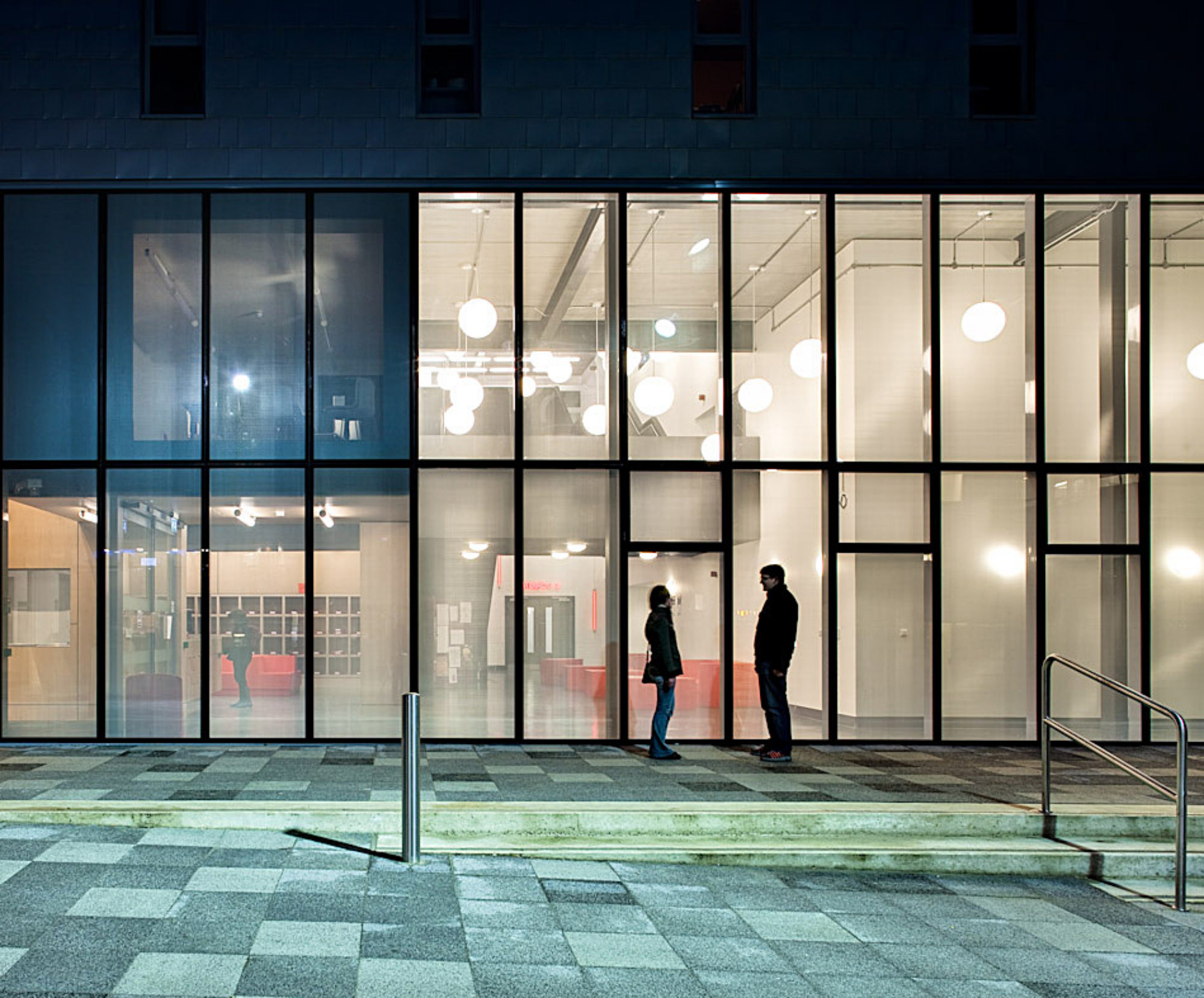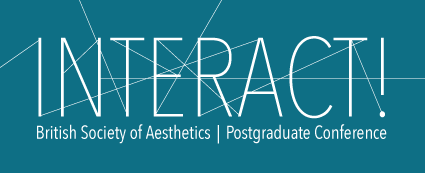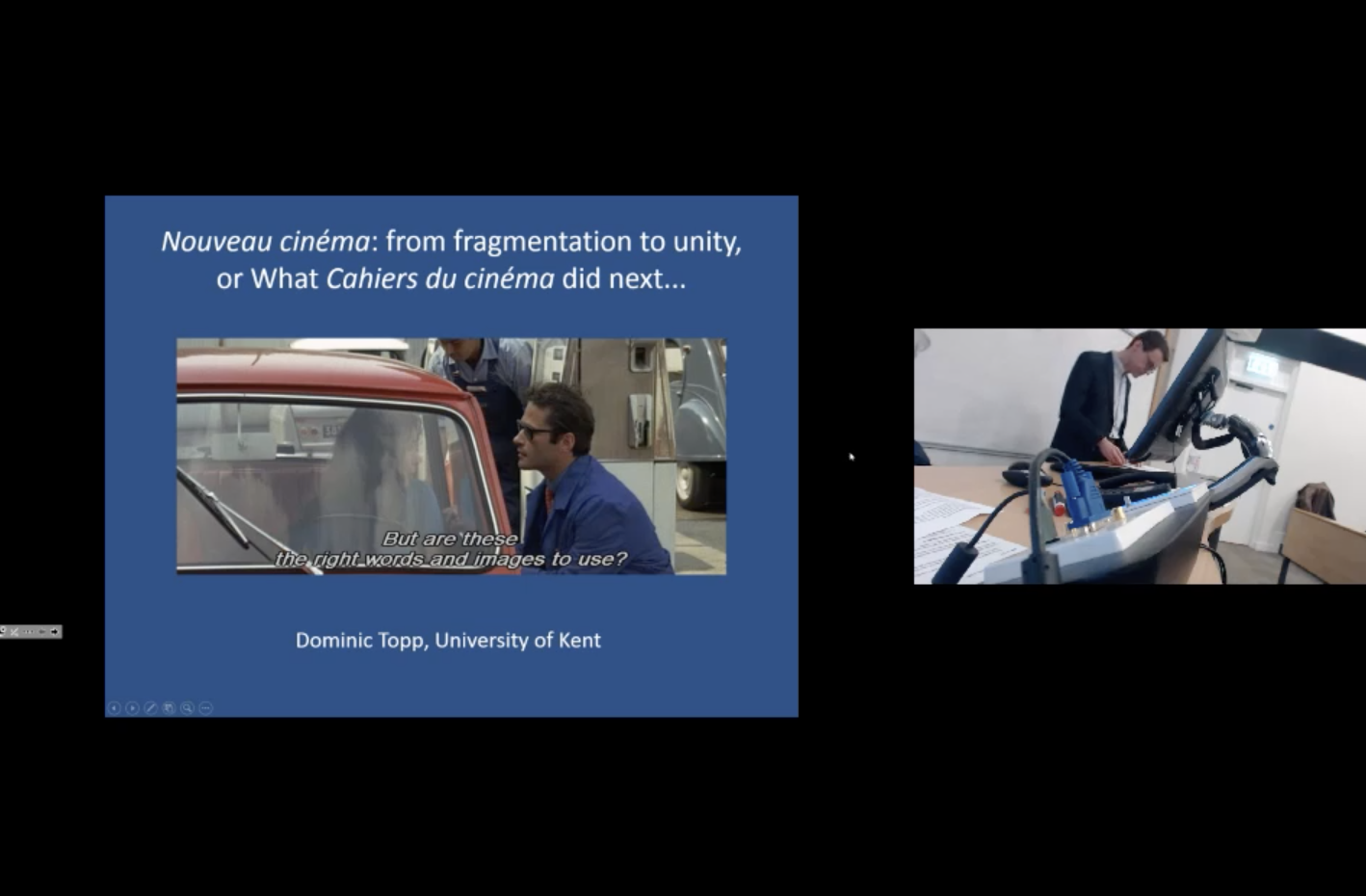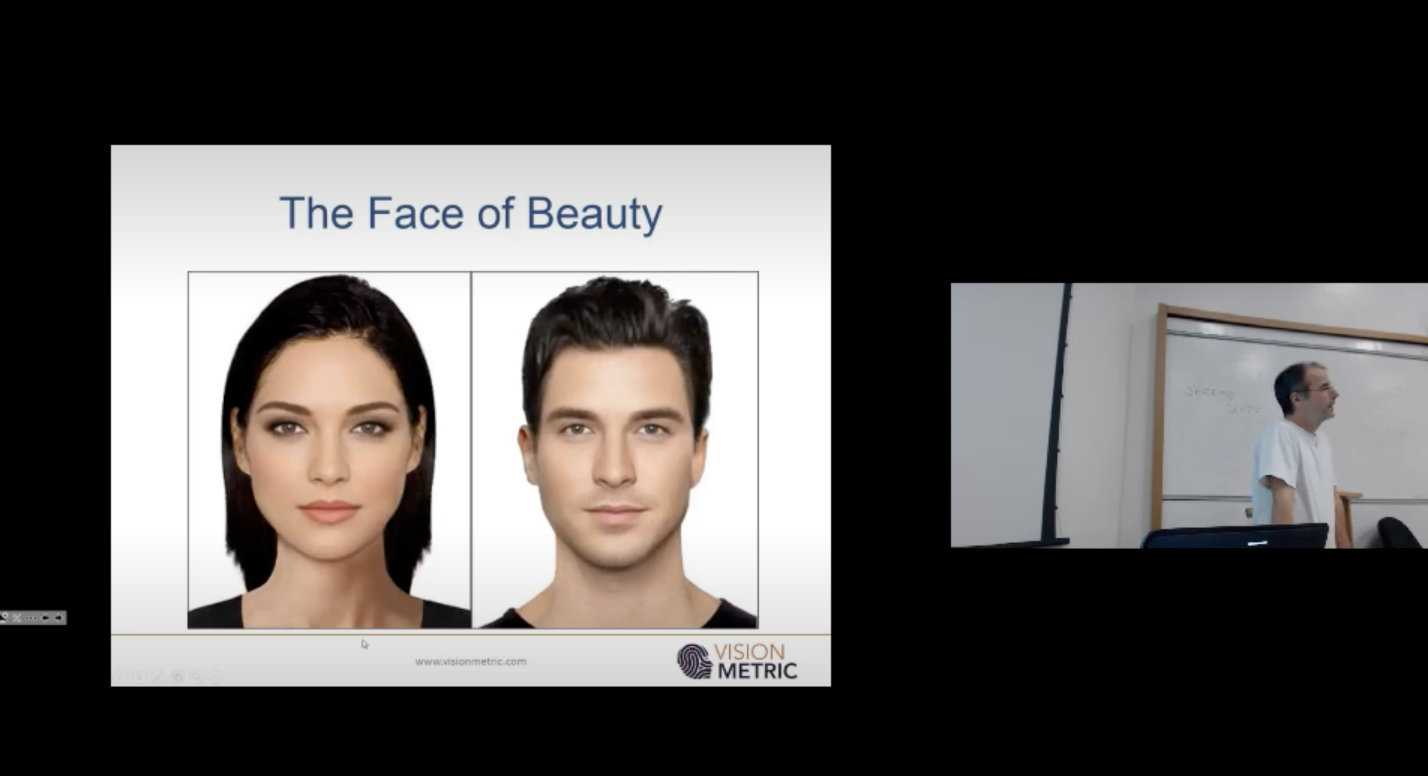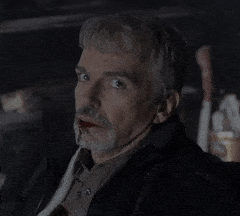Keynote by Professor Elisabeth Schellekens at Interact – British Society for Aesthetics Postgraduate Conference, 7-8 February 2015
Dominic McIver Lopes: Aesthetic Experts, Guides to Value
Aesthetic Experts, Guides to Value
Keynote by Dominic McIver Lopes at Interact (British Society for Aesthetics) at the INTERACT Postgraduate Conference, 7-8 February 2015
Chair: Shelby Moser
Interact: BSA PG Conference
SESSION 1
- ‘Affective Representation of Aesthetic Properties — Kris Goffin, Ghent University
- The Role of Emotions in the Experience of Inanimate Objects’ Expressiveness’ —Marta Benenti, University of Turin
- ‘The Temporality of Aesthetic Experience: A Neurophilosophical Approach’ —Carlos Vara, Universitat Pompeu Fabra
SESSION 2
- The Diversity of Counter-Moral Fictions and the Ethical Criticism of Art — Adriana Clavel Vazquez, University of Sheffield
- Can we be Romantic about Narratives? Rediscovering a Context for Actual Intentions in Aesthetics —Mary Edwards, University College Cork
- Ryle on Make-believe: An Evaluation of the Treatment of Imagination in The Concept of Mind for Aesthetical Theories of Fiction — Guillaume Schuppert, Les Archives Henri Poincaré
SESSION 3
- What Constitutes Architecture’s High Art Status — Rebecca Wallbank, Durham University
- On the Difference between Categories of Artworks and Nature; A Critique of Allen Carlson’s Unified Aesthetics — Mami Aota, The University of Tokyo
- Structural Monism for Musical Works — Nemesio Garcia-Garril, University of Granada
SESSION 4
- Aesthetic Powers and Adverbials — James Matharu, St Cross College, University of Oxford
- Wink-Wink, nudge-nudge. Stylistic indicators of irony in cartoons — Dieter Declercq, University of Kent
SESSION 5
- The Phenomenology of Dance: Husserlian and Post-Husserlian Approaches — Emma Lowe, KU Leuven, Belgium
- Technology’s Instances: The digital Re-configuration of Dance Work Ontology — Hetty Blades, Coventry University
Dominic Topp – Nouveau cinéma: from fragmentation to unity, or What Cahiers du cinéma did next…
Wednesday 9th December, 5pm – 7pm. in GLT3
Dr Dominic Topp, School of Arts, University of Kent
In the mid-1960s a new generation of critics at Cahiers du cinéma, who had taken over from the ‘young Turks’ of the 1950s, moved the journal away from the veneration of Hollywood auteurs and the exploration of mise en scène for which it is still best known. Instead, they began to write about and to actively promote what they dubbednouveau cinéma (new cinema). This term was applied to the work of a wide variety of filmmakers from many different countries, but broadly speaking it can be seen as designating a modernist film practice. Drawing on examples from films by, among others, Věra Chytilová, Agnès Varda and Jerzy Skolimowski, this paper will describe some of the features of nouveau cinéma as they were outlined by Cahiers critics such as Jean-Louis Comolli, Noël Burch and Serge Daney: discontinuity and ambiguity at the levels of both subject matter and form, a creative tension between fragmentation and unity, and a reflexivity that could be understood as self-critical, and even oppositional, in nature. It will suggest that the concept of nouveau cinéma can be understood as an interpretative schema that allowed Cahiers readers to make sense of a diverse range of challenging new films by considering their formal and stylistic practices as their true subject matter, and offered a set of viewing strategies by which formal experimentation and political engagement could be seen not as mutually exclusive but as profoundly interrelated.
Sarah Cardwell: research seminar
Monday 26th October, 5pm – 7pm. in KS14
‘Framing television: the dramatic implications of aspect ratio’
Within television studies, and even within television aesthetics, ‘aspect ratio’ is frequently overlooked or naively characterised. Yet it plays a fundamental, determining role in forming and framing television’s dramatic spaces and in turn, its stories and meanings. A balanced reappraisal of television’s varied aspect ratios and its impact upon TV’s unique dramatic and aesthetic possibilities can enhance our close analyses and further our understanding of television’s fascinating ‘art history’.
In this paper I will challenge some residual myths, misunderstandings and preconceptions about TV’s aspect ratios and their spatial properties. I would like to counter prevailing pro-widescreen rhetoric, by tracing some of the dramatic and aesthetic qualities of 4:3 that have been lost in the movement to 16:9; in pursuit of this, I’ll consider the example of Marion and Geoff (BBC, 2000 & 2003). I aim to make the case for more overt and sustained attention to be paid to aspect ratio within television aesthetics.
Dr Sarah Cardwell is Honorary Fellow in the School of Arts, University of Kent, where she was previously Senior Lecturer. She is the author of Adaptation Revisited (MUP, 2002) and Andrew Davies (MUP, 2005), as well as numerous articles and papers on film and television aesthetics, literary adaptation, contemporary British literature, and British cinema and television. She is a founding co-editor of ‘The Television Series’ (MUP), Book Reviews editor for Critical Studies in Television, and on the advisory board for the new series ‘Adaptation and Visual Culture’ (Palgrave Macmillan).
Chris Solomon: The Face of Beauty
Oct 21 2015, 4-6pm, GLT3
Diarmuid Costello: “Standard Philosophy of Photography: Tracing the Roots of the Orthodox Paradigm”
Oct 6, 6-8pm, KLT2
My research draws on both analytic and continental approaches to aesthetics and the philosophy of art, and is informed by recent debates in art history and theory. Recently, it has focused on two main goals:
1. To defuse antipathy to aesthetics in art theory by showing that kinds of art typically thought challenging to aesthetics can be accommodated by a sufficiently rich aesthetic theory. To this end I have drawn on the neglected semantic potential of Kant’s supposedly formalist theory of art, and endeavoured to show that a variety of supposedly anti-aesthetic artforms can be accommodated by the resulting aesthetic theory.
2. To contest widespread assumptions in the philosophy of photography regarding the nature of photography, particularly as an artistic medium, in part by showing that it is predicated on a narrow diet of examples that distorts philosophers’ understanding of the field, and in part by developing an alternative conception of photographic agency. The former draws on resources in art history, the latter on the philosophy of action.
I am currently working on two books, each associated with one of these goals: ‘Art after Aesthetics? A Critique of Theories of Art after Modernism’ and ‘On Photography’. Both involve substantive engagement with recent art. Artists whose work has been important for these projects and also figures in the publications below include: Brian Barry, Lawrence Weiner, Art & Language, Sol LeWitt, Adrian Piper, Richard Long; James Welling, Jeff Wall, James Coleman, Thomas Ruff, Rineke Dijkstra, Lee Friedlander, Ed Ruscha; Gerhard Richter, Chuck Close, William Kentridge, and Phillip Guston.
Ted Nannicelli: Making Do With Agency
Agency, Authorship and the Appreciation of Television
Lecturer in Film and Television Studies, University of Queensland
22 June 2015, MLT2
Chair: Murray Smith
Abstract
This paper addresses a puzzle regarding the creation and appreciation of television. Recent scholarship has made it clear that the material production of television is a fundamentally collaborative enterprise. Particularly in the case of serial television drama, an astonishing number of “above the line” workers like writers, producers, and directors and “below the line” workers like cinematographers, art directors, sound designers, and editors contribute to the creation of an overall series. This essentially collaborative nature of television production has led some theorists to conclude that television (and sometimes film) is therefore essentially collectively authored (Caldwell 2008; Gaut 2010). While others have questioned whether such contributors have the proper control or authority to be regarded as authors (Livingston 2009), I focus on another problem with this view — namely, the problem of properly attributing blame to those individuals responsible for the relevant features of artistically and ethically flawed works. However, even weaker views (e.g. Livingston 2009), according to which film is only sometimes collectively authored, don’t translate as satisfactory accounts of collective authorship in television. I argue that inasmuch as Livingston’s account of joint-authorship is indebted to Bratman’s work on shared agency (1999, 2014), it cannot account for collective creation in hierarchically-organized groups like television production teams. And yet it seems like the appreciation of television as an art form requires some concept of authorship. I offer a number of desiderata any account of television authorship must meet, and I suggest that although authorship rarely obtains in television, we can, in most appreciative contexts, make do by simply speaking of “agency.”
Ted Nannicelli is Lecturer in Film and Television Studies at the University of Queensland. He is the author of A Philosophy of the Screenplay (2013) and co-editor of Cognitive Media Theory (2014). He is currently working on a new book, Appreciating the Art of Television: A Philosophical Perspective, to be published by Routledge.
A Symposium on Villains
University of Kent, 21. May 2015, Grimond lecture theatre 2
Little has been said about the appeal of villains, and the important role they play in stories. In what sense can we be said to enjoy the villain’s transgressions – and do we enjoy all sorts of transgressions? In this interdisciplinary symposium we will address what a villain is, which acts or character traits we perceive as villainous, how villains are portrayed and how we feel about villains in various art forms and media, such as in film, television series, video games and theatre.
Generously sponsored by Kent Institute for Advanced Studies in the Humanities, the Aesthetic Research Centre and the Centre for the Interdisciplinary Study of Film and the Moving Image at the University of Kent
09.00-09.05: Welcome
09.05-09.55: Associate Professor Anne W. Eaton (Dept. of Philosophy, University of Illinois at Chicago): “Aesthetic and Moral Quandaries Pertaining to Likeable and Admirable Villains”
10.00-10.50: Dr Margrethe Bruun Vaage (Film Dept., University of Kent): “Narrative Desires and the Importance of Immorality in Stories”
Coffee
11.05-11. 55: Professor Murray Smith (Film Dept., University of Kent) “The Wild, the Beautiful, and the Damned: Villains, Anti-Heroes and Moral Imperfectionism”
12.00-12.50: Dr Jonathan Friday (History of Art Dept., University of Kent): “On Great Villains”
12.50-14.10: Lunch (not provided)
14.10-15.00: Dr Helen Brooks (Dept. of Drama and Theatre, University of Kent): “Spies and Brutes: The Representation of Germans as Villains on the British Stage Between 1914 and 1918”
Coffee
15.15-16.05: John Sabo (School of Psychology, University of Kent): “The Fictive Pass: An Exploration of Why Fictional Violence Is More Acceptable Than Fictional Sexuality”
16.10-17.00: Professor Roger Giner-Sorolla (School of Psychology, University of Kent): “Harms and Taboos: Emotions and Character in Differing Reactions to Villainous Behavior”
The symposium is free and open to everyone, and you do not need to register. Questions may be directed to Margrethe Bruun Vaage (M.B.Vaage@kent.ac.uk)
Generously sponsored by Kent Institute for Advanced Studies in the Humanities, the Aesthetic Research Centre and the Centre for the Interdisciplinary Study of Film and the Moving Image at the University of Kent
Anne Eaton – A Lady on the Street But a Freak in the Bed
On the Distinction Between Erotic Art and Pornography
